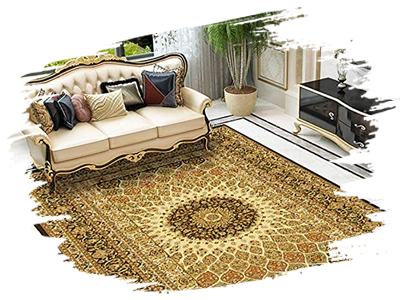| Get a great visual impact give to that special place you're decorating or remodeling. Persian rugs are not only a work of art making, they are also very useful. |
A Persian rug, also known as Iranian rug, is a heavy textile made for a wide variety of utilitarian and symbolic purposes and produced in Iran (historically known as Persia), for domestic use, local sale and export. Rug weaving is an essential part of Persian culture and Iranian art. Within the group of oriental rugs produced by the countries of the so-called "rug belt", the Persian rugs stands out for the variety of its multiple designs.
 Different types of weavings were developed in parallel by nomadic tribes, in workshops of towns and villages, and by manufactures of real courts alike. As such, they represent different lines of simultaneous tradition, and reflect the history of Iran and its various peoples. The rugs woven in the factories of the court of Safavid in Isfahan during the sixteenth century are famous for their elaborate colors and artistic design, and are treasured in museums and private collections around the world today. Their patterns and designs have established an artistic tradition for the manufactures of the court that remained alive throughout the duration of the Persian Empire until the last royal dynasty of Iran.
Different types of weavings were developed in parallel by nomadic tribes, in workshops of towns and villages, and by manufactures of real courts alike. As such, they represent different lines of simultaneous tradition, and reflect the history of Iran and its various peoples. The rugs woven in the factories of the court of Safavid in Isfahan during the sixteenth century are famous for their elaborate colors and artistic design, and are treasured in museums and private collections around the world today. Their patterns and designs have established an artistic tradition for the manufactures of the court that remained alive throughout the duration of the Persian Empire until the last royal dynasty of Iran.
The rugs woven by the villages and various tribes of Iran are distinguished by their fine wool, their bright and elaborate colors and their specific and traditional patterns. The weavers of small and nomadic villages often produce rugs with bolder designs, which are considered the most authentic and traditional carpets of Persia, as opposed to the pre-planned and artistic designs of the larger workplaces. Gabbeh rugs are the best known rug type of this tradition line.
Modern production is characterized by traditional dyeing with natural dyes, traditional tribal patterns, but also by the invention of modern and innovative designs, woven into centuries-old technique. Hand-woven Persian carpets and rugs have been considered objects of great artistic and utilitarian prestige and value since they were first mentioned by ancient Greek writers.
In 2010, the "traditional skills of carpet weaving" in the province of Fars and Kashan were inscribed on the UNESCO Intangible Cultural Heritage Lists.




